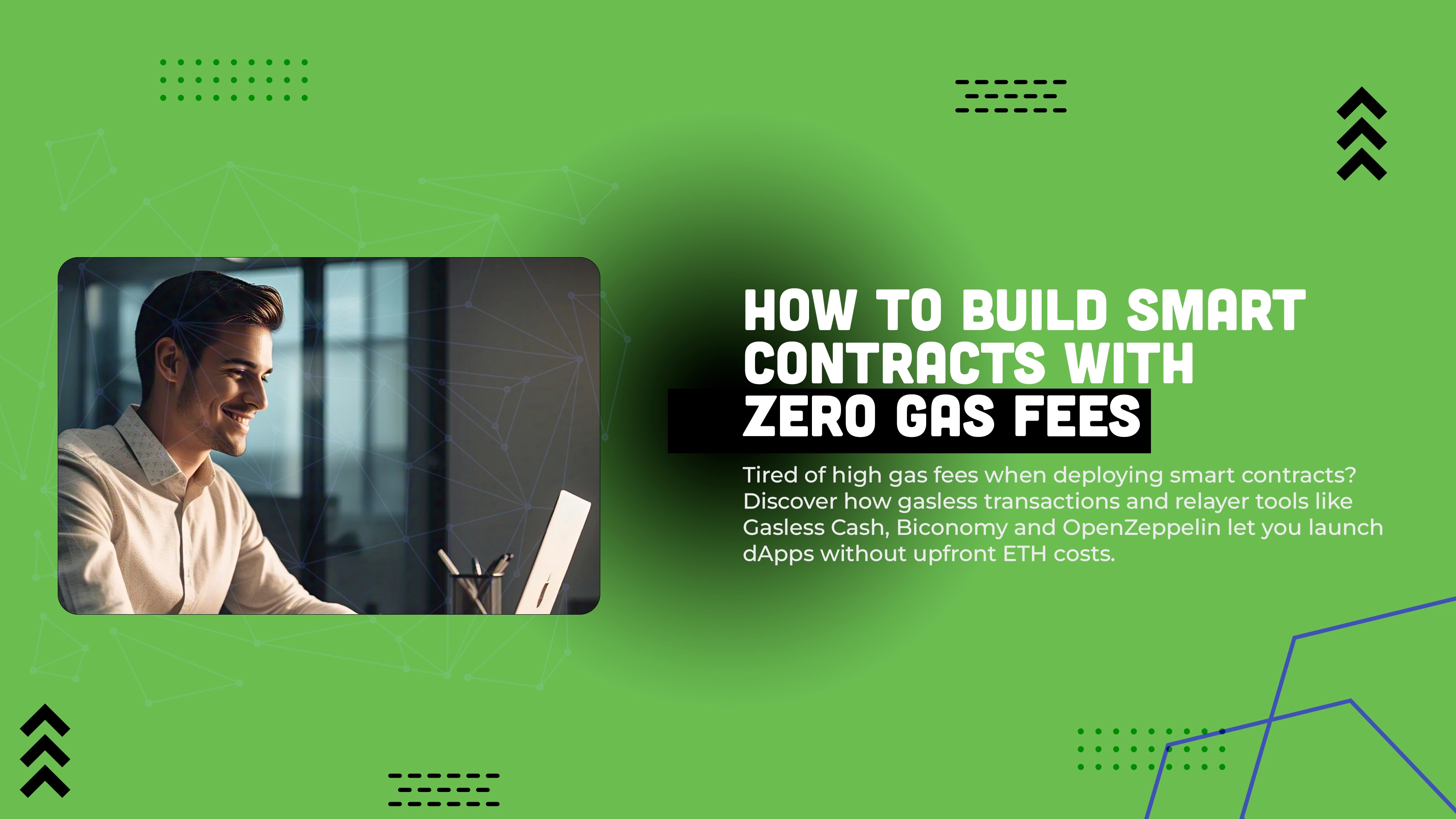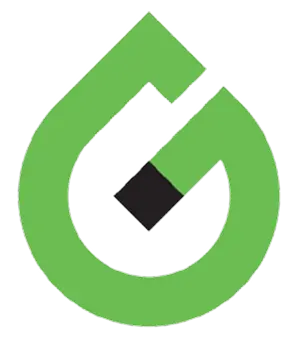How to Build a Smart Contract Without Paying Gas Fees

Deploying smart contracts on Ethereum can be expensive due to gas fees, which hinders adoption and scalability—especially for new developers and users. However, gasless transactions powered by relayers (like Biconomy, Gelato, and OpenZeppelin Defender) allow you to deploy and interact with smart contracts without paying gas upfront. These systems use meta-transactions, where users sign messages off-chain and relayers submit them on-chain, covering the gas fees. This results in smoother onboarding, better UX, and improved scalability. Developers can enable this using tools like OpenZeppelin’s ERC2771Context, EIP-712, and relayer SDKs. Gasless transactions are a game-changer for Web3 development, offering a more accessible and scalable way to build dApps—without sacrificing decentralization or security.
You are probably already tired of burning through ETH simply because you want to deploy a smart contract. Anyway, this feels like the norm for everyone and not just for you alone.
Many developers, especially those just getting started or bootstrapping their projects and having to face this same challenge, will often feel stuck, and the entire process begins to feel more like a roadblock rather than a gateway to innovation.
But here's the update: it's now possible to build and deploy your smart contracts without paying any gas fees upfront — thanks to a growing innovation in Web3 infrastructure known as gasless transactions. At the heart of this breakthrough are relayers — third-party services that help you execute blockchain transactions while covering the gas fees on your behalf.
As promised, in this article, I’ll briefly touch on how gasless transactions work, how relayers power gasless transactions, and how you can leverage available tools like Biconomy, OpenZeppelin Defender, or Gelato to launch your smart contract without paying for gas.
As someone who’s worked hands-on with blockchain development, user onboarding, and smart contract deployment for both startups and personal Web3 projects, I’ve seen firsthand how game-changing this can be, especially for developers focused on improving Web3 user experience and accessibility.
Let's get right to the heart of the article.
Smart Contracts In A Bit & The Cost Of Deploying It.
Smart contracts are the backbone of decentralised applications (dApps), powering everything from DeFi protocols to NFT platforms. But despite their revolutionary potential, one glaring problem continues to frustrate developers and slow down adoption: You guessed it - gas fees.
Every interaction on a blockchain like Ethereum requires a transaction fee, commonly known as gas. Whether deploying a smart contract, minting a token, or even updating a variable, you’ll need to pay gas in ETH. While this system is essential for network security and incentivising validators, it also creates a steep entry barrier, especially for new developers, indie builders, or startups running on limited budgets.
For example, deploying a relatively simple smart contract can cost anywhere from $5 to over $100, depending on network congestion. During peak periods, these fees can spike dramatically, making it nearly impossible to test, iterate, or innovate at scale. In a space that's supposed to be permissionless and open, this economic friction feels ironically limiting.
Beyond the cost, there's also a UX bottleneck. Imagine onboarding a non-technical user to your dApp and asking them to acquire ETH just to interact with your product. For many, that’s a deal-breaker.
This is not just a minor inconvenience — it's a fundamental issue that affects scalability, user experience, and overall Web3 adoption. Developers need a way to deploy and interact with smart contracts without being held hostage by fluctuating gas fees. And that’s exactly where gasless transactions and relayer infrastructure come in.
To fully understand how gasless smart contracts work — and why they matter — you need a solid grasp of what gas is in the blockchain world.
Gas is essentially the computational cost of executing actions on a blockchain like Ethereum. Every time you write to the blockchain — whether it's deploying a contract, transferring tokens, or calling a function — that action must be processed and validated by a decentralised network of nodes. To prevent spam and compensate validators for their work, users must pay a transaction fee in ETH, and that fee is calculated in units of gas.
The more complex your contract or interaction, the more gas it consumes. For example, deploying a basic ERC-20 token contract costs less gas than deploying a multi-layered DeFi smart contract. These fees can fluctuate wildly based on network demand — during busy periods, gas prices spike, making even simple transactions cost-prohibitive.
But beyond just cost, this model introduces a serious UX flaw for new users and developers. Unlike traditional apps, where users just click and go, interacting with dApps often requires acquiring ETH first, understanding gas settings, and managing wallet transactions. For someone who’s never used crypto before, this is confusing at best — and alienating at worst.
Read Also: 3 Challenges Facing Web3 Adoption & How Gasless.cash Is Solving Them
So, what’s the workaround? That’s where gasless transactions come into play. Instead of requiring users (or developers) to pay gas upfront, gasless models enable transactions to be signed off-chain and submitted on-chain by a third-party called a relayer. The user signs a message approving the action, and the relayer pays the gas to submit it — often in exchange for a small fee, a later settlement, or via sponsorship models.
This mechanism allows for a smoother onboarding experience, better scalability for dApps, and a more inclusive ecosystem — one where users can interact with Web3 tools without needing to first learn the economics of Ethereum.
As blockchain adoption has grown, so have the solutions aimed at tackling the gas fee challenge. Several approaches now exist to reduce or completely bypass the need for users or developers to pay gas when deploying or interacting with smart contracts. Let’s explore the most effective options:
1. Layer 2 Scaling Solutions
Platforms like Polygon, Arbitrum, and Optimism provide faster and cheaper transactions by operating on top of Ethereum. They reduce gas costs significantly, making smart contract deployment more affordable, but you still pay some gas.
Advantages: Lower fees, faster transaction times.
Disadvantages: The requirement for some gas and other bridging assets may add complexity.
2. Meta-Transactions
This is the core of the gasless movement. In a meta-transaction, a user signs a message off-chain, and a relayer (usually a backend service or dApp operator) sends the actual transaction on-chain — paying the gas on behalf of the user.
Advantage: Truly gasless for the end-user. Great for onboarding new users.
Disadvantage: Requires relayer infrastructure and security considerations.
3. Relayer Networks
Solutions like Gasless Cash, Biconomy, Gelato, and OpenZeppelin Defender offer powerful APIs and SDKs to handle meta-transactions and gas sponsorship. These services abstract the complexities and allow you to plug gasless functionality directly into your dApp.
Advantage: Developer-friendly, scalable, often includes dashboards and analytics.
Disadvantage: May involve platform fees or centralised components.
4. Account Abstraction (ERC-4337)
This is the future-facing option. With account abstraction, smart wallets can be programmed to let someone else (a relayer or sponsor) cover gas costs, customise security rules, or even batch transactions.
Advantage: Highly flexible, gasless is possible by design, developer control.
Disadvantage: Still early-stage in adoption and tooling.
Each of these options mentioned above has trade-offs, but they all move us toward a more inclusive, user-friendly Web3 experience.
Now let's explore how you can select and implement the best option for building your smart contract without paying gas.
Best Option For Building and Executing Your Smart Contract Step-by-Step
Now that we’ve explored the available solutions, let’s focus on the most practical and scalable path for developers who want to build smart contracts without paying gas: Meta-Transactions with Relayer Infrastructure.
Why this route? Because it allows you to maintain full compatibility with Ethereum while making it possible to offload gas costs to a third party — either temporarily or permanently, depending on your use case. This setup is ideal for onboarding users, launching MVPs, or running open betas where you want zero friction for both devs and users.
Here’s a step-by-step guide to getting started:
🔧 Step 1: Write Your Smart Contract
Start by writing your smart contract in Solidity. For example, an ERC-20 or ERC-721 contract. This part is the same as usual — you're writing the logic of your dApp.
💡 Pro Tip: Keep your contract gas-efficient by avoiding unnecessary storage writes and loops.
You can watch the video below on YouTube to learn how this is done on Solidity.
Step 2: Enable Meta-Transaction Support
To make your contract compatible with relayer services, you’ll need to add support for meta-transactions. You can do this using OpenZeppelin’s ERC2771Context or integrating EIP-712 signature verification manually.
Alternatively, platforms like Biconomy or OpenZeppelin Defender offer SDKs that handle this integration with minimal boilerplate.
Step 3: Set Up a Relayer Service
Choose a relayer infrastructure to send your gasless transactions:
- Biconomy: Offers a plug-and-play SDK for gasless transactions, analytics, and wallet integration.
- OpenZeppelin Defender: Offers automated relaying, custom scripts, and secure key management.
- Gelato: Ideal for automating backend smart contract interactions with gas payment capabilities.
Each of these provides a dashboard, API access, and security features to manage relayed transactions effectively.
Step 4: Implement Signature Flow in Your Frontend
In a gasless setup, the user signs a message off-chain using their wallet (e.g., MetaMask), and this signed message is forwarded to the relayer.
Use the EIP-712 standard to handle structured data signing and verification — ensuring the transaction is secure, deterministic, and wallet-friendly.
Step 5: Test and Deploy
Before launching, test everything in a testnet environment (like Mumbai for Polygon or Goerli for Ethereum) using mock relayers. Once confirmed, deploy your smart contract using your relayer system to handle gas.
Bonus Tip: Consider sponsoring gas for early users to reduce friction and accelerate adoption.
Step 6: Monitor and Evaluate
Use built-in dashboards (e.g., Biconomy’s Analytics, Defender’s Monitoring) to:
- Track transaction success/failure
- Monitor relayer usage and gas cost savings
- Adjust logic or gas sponsorship thresholds
Evaluating performance ensures your gasless setup is not only efficient but sustainable as user traffic grows.
Done! You've now created and deployed a smart contract without paying gas directly — and more importantly, without forcing your users to either.
Now that you’ve successfully built and deployed a gasless smart contract using relayer infrastructure, it’s time to evaluate:
What Worked
- No upfront ETH needed: Both developers and users can now interact with your dApp without worrying about wallet balances or fluctuating gas fees.
- Smoother onboarding: New users don’t need to buy ETH or understand blockchain mechanics — they simply sign messages and go.
- Scalability: By offloading gas payments, you’ve created a more sustainable model for beta launches, promotional campaigns, and broader user acquisition.
What to Watch
- Relayer costs: Although users don’t pay gas, someone does. Monitor relayer usage and decide whether to introduce sponsorship limits, token-based models, or user opt-ins for future sustainability.
- Security: Ensure signatures are validated properly and use battle-tested libraries like OpenZeppelin for safe contract deployment.
- Tooling limits: Some SDKs and platforms have rate limits or centralized components — always read the documentation and consider fallback strategies.
Final Takeaway
Gasless smart contracts are not just a trend — they are a practical solution to one of Web3’s most persistent challenges: accessibility.
By using meta-transactions and relayer infrastructure, you’re not just saving a few bucks — you’re removing barriers for the next billion users who may one day use your dApp. You’re building smarter, faster, and more user-centric applications that meet people where they are.
And the best part? You didn’t have to compromise on decentralization, security, or developer control.
